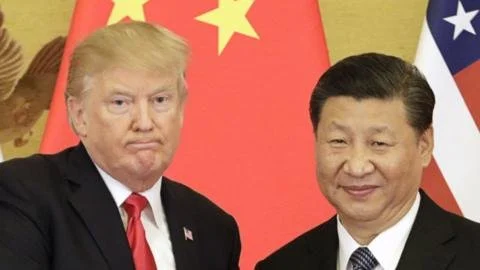China's Strategic Masterstroke: How Rare Earths Became Trump's Achilles' Heel
Last week, China’s Ministry of Commerce shook the world with announcement No. 62 of 2025, introducing major restrictions on its rare earth exports. This move not only tightened China’s grip on the global supply of these critical minerals but also highlighted its strategic leverage over the ongoing trade war with the United States. With a monopoly in the processing of rare earths, which are essential for manufacturing a plethora of products from smartphones to fighter jets, China has made it clear that foreign companies will now require government approval to export materials containing rare earths.
In a swift reaction, US President Donald Trump threatened to impose a staggering 100% tariff on Chinese goods, intensifying the conflict. U.S. Treasury Secretary Scott Bessent condemned the situation, stating, “This is China versus the world,” emphasizing the potential dangers posed to global supply chains. In response, China accused the US of inciting unnecessary panic, assuring foreign companies that compliant applications for civilian use would still be approved.
The bilateral tension escalated with both nations implementing new port fees on each other’s ships, signaling a breakdown in the fragile truce that had been established earlier this year. Experts predict that the latest developments may give China a significant advantage in upcoming negotiations between Trump and President Xi Jinping. The timing of these restrictions is crucial, potentially disrupting America’s planned negotiation timeline.
Rare earth materials play a pivotal role in various technologies, with a single F-35 fighter jet necessitating over 400kg of these minerals for advanced capabilities. Notably, China accounts for about 70% of the global supply of metals used in electric vehicle motors, placing immense pressure on the U.S. and its allies, who currently lack sufficient alternative sources
China’s dominance comes from years of investment in talent and technology, putting it years ahead of competitors. Meanwhile, while Australia has potential resources, it’s hindered by underdeveloped production infrastructure, making it a less viable alternative in the short term.
Despite a 30% drop in rare earth exports this September compared to the previous year, the economic impact on China is minimal, as these exports constitute less than 0.1% of its $18.7 trillion annual economy. Nevertheless, the strategic significance of rare earths as leverage in trade negotiations cannot be understated.
While the U.S. seeks to regain the upper hand, options remain limited. Suggestions range from lowering tariffs to introducing more trade restrictions aimed at China’s tech sector, especially regarding high-end semiconductors. However, experts caution that while these measures may slow down China’s technological ambitions, they won’t halt progress entirely.
Ultimately, China’s ability to limit rare earth exports represents a formidable weapon in its arsenal against the U.S., putting immense pressure on American industries that depend on these critical materials.

